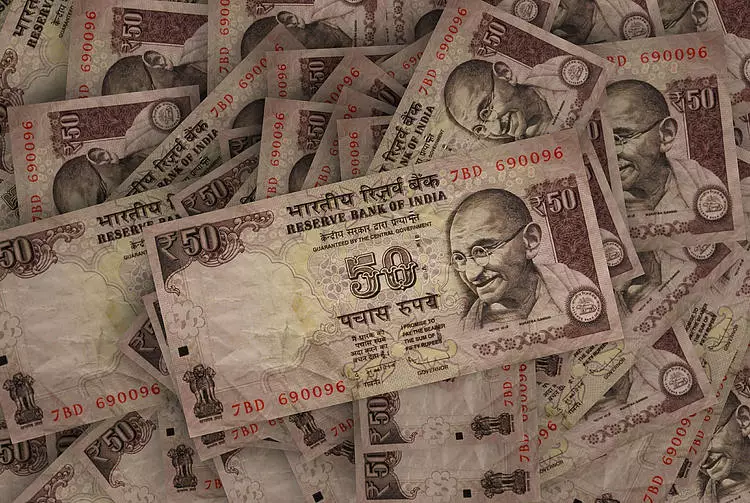In recent trading sessions, the Indian Rupee (INR) has displayed a notable trend of depreciation, particularly against the US Dollar (USD). As of Tuesday in the Asian trading period, the currency has been under pressure for three consecutive days, primarily due to a resurgence in demand for the USD, coupled with fluctuating crude oil prices and foreign capital outflows. The interplay of these factors has prompted a reevaluation of the INR’s position in the global financial landscape.
The demand for USD from foreign banks has surged, reflecting increased caution among investors amidst global economic uncertainties. The backdrop of this scenario includes rising tensions in the Middle East, which have led to erratic oil prices, further complicating India’s economic stability. The Indian economy, heavily reliant on imported oil, is sensitive to changes in crude prices. This dependency exacerbates the challenges facing the INR during times of international volatility.
Investors and analysts are closely monitoring key economic indicators that could influence the INR’s trajectory. The anticipated release of the HSBC India Manufacturing Purchasing Managers Index (PMI) for September is expected to provide insights into the health of India’s manufacturing sector. Similarly, the US ISM Manufacturing PMI is set to play a pivotal role in shaping market sentiment, particularly in relation to the Federal Reserve’s monetary policy stance.
Statements from Federal Reserve officials, including Chair Jerome Powell, have added another layer of complexity to the discussion surrounding interest rates. Powell indicated that any recent interest rate cuts should not be misconstrued as a precursor to more aggressive monetary easing. Instead, he emphasized a cautious approach, asserting that future rate cuts would depend on the evolving economic landscape. With futures markets pricing in varying probabilities for upcoming interest rate adjustments, the implications for the USD/INR pair remain significant.
Amit Pabari, managing director at FX advisory firm CR Forex, noted that the rupee has started to drift back towards its typical range after previously appreciating. This shift can largely be attributed to heightened month-end dollar demand from importers, further compounded by the Reserve Bank of India’s (RBI) management of the currency. The RBI’s interventions play a crucial role in stabilizing the exchange rate, helping to facilitate trade amid volatile conditions.
India’s current account situation is another pressing concern, with a reported deficit of $9.7 billion in the first quarter of FY25, amounting to 1.1% of the Gross Domestic Product (GDP). Such figures add further pressure on the INR and reflect the delicate balance the RBI must maintain while trying to support economic growth and manage inflation.
The performance of the USD/INR pair emphasizes the technical aspects at play. As the INR continues to trade on weaker footing, the USD/INR pair exhibits a bullish sentiment on the daily chart, with prices consistently hovering above the important 100-day Exponential Moving Average (EMA). However, market consolidation cannot be discounted as the 14-day Relative Strength Index (RSI) indicates a neutral momentum.
Key resistance levels for the USD/INR pair are creating significant psychological barriers, notably the 84.00 mark. A decisive breakthrough above this threshold could catalyze a rally towards previous highs, while the 100-day EMA around 83.62 serves as an initial support level. Extended losses may lead the pair towards lower levels, including the psychologically significant 83.00 mark.
The intrinsic value of the INR is shaped by a multitude of macroeconomic factors, including inflation rates, interest rates, economic growth, trade balance, and foreign investment inflows. High inflation, particularly when compared to India’s economic peers, generally dampens the currency’s strength. It signifies that the currency may be losing value due to excessive supply in the market. Conversely, higher interest rates can bolster the INR by attracting foreign investment through strategies like the ‘carry trade,’ where investors prefer higher-yielding assets.
The dynamic interplay of these economic indicators and geopolitical factors underscores the complexity of currency valuation. To better navigate these waters, the RBI seeks to maintain a stable inflation rate around its target of 4% while also addressing the challenges posed by external economic conditions.
The Indian Rupee is currently facing a challenging landscape dominated by external pressures and domestic economic conditions. As various economic indicators, central bank policies, and international developments continue to unfold, the future trajectory of the INR remains uncertain. Market participants will need to stay vigilant, taking into account both domestic economic indicators and global financial dynamics that could influence the value of the Rupee in the coming weeks.

